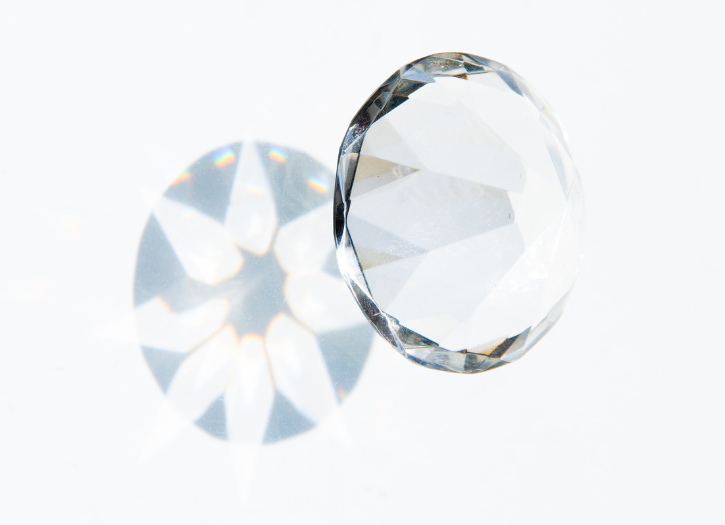The Hope Diamond is a 45.52-carat (9.104 g) diamond originally extracted in the 17th century from the Kollur Mine in Guntur, India.
The Hope Diamond was formed deep within the Earth approximately 1.1 billion years ago. Like all diamonds, it was formed when carbon atoms formed strong bonds with each other. The Hope Diamond was originally embedded in kimberlite and was later extracted and refined to form the current gem. Weight: In December 1988, the Gemological Institute of America‘s laboratory determined the diamond to weigh 45.52 carats (9.104 g; 0.3211 oz).
Size and shape: The diamond has been compared in size and shape to a pigeon egg or a walnut that is pear-shaped. The length, width, and depth are 25.60 mm × 21.78 mm × 12.00 mm (1 in × 7/8 in × 15/32 in).
Color: It has been described as being a “fancy dark greyish-blue” as well as “dark blue in color,” or having a “steely-blue” color. Blue diamonds similar to the Hope can be shown by colorimetric measurements to be grayer (lower in saturation) than blue sapphires. In 1996, the Gemological Institute of America examined the diamond and, using their proprietary scale, graded it fancy deep grayish blue.
Phosphorescence: The stone exhibits an unusually intense, brilliant red phosphorescence after exposure to short-wave ultraviolet light. This ‘glow-in-the-dark’ effect persists for some time after the light source has been switched off, and this strange quality may have helped fuel its reputation of being “cursed.” The red glow is a phenomenon of blue diamonds that helps scientists “fingerprint” them, allowing them to distinguish real ones from artificial ones.
Clarity: The clarity was determined to be VS1, with whitish graining present.
Cut: The cut was described as being “cushion antique brilliant with a faceted girdle and extra facets on the pavilion.”
Chemical composition: In 2010, the diamond was removed from its setting to measure its chemical composition. After boring a hole one nanometer deep, preliminary experiments detected the presence of boron, hydrogen, and possibly nitrogen; the boron concentration varies from zero to eight parts per million. The boron is responsible for causing the blue color of the stone.
Touch and feel: When Associated Press reporter Ron Edmonds was allowed by Smithsonian officials to hold the gem in his hands in 2003, he wrote that the first thought that had come into his mind was, “Wow!” It was described as “cool to the touch.” He wrote:
You cradle the 45.5-carat stone—about the size of a walnut and heavier than its translucence makes it appear—turning it from side to side as the light flashes from its facets, knowing it’s the hardest natural material yet fearful of dropping it.
Hardness: Diamonds in general, including the Hope Diamond, are the hardest natural minerals known on Earth, but because of weak planes in the bonds of a diamond’s crystalline structure, the crystal can fracture along these planes if not handled correctly.







Add Comment
You must be logged in to post a comment.